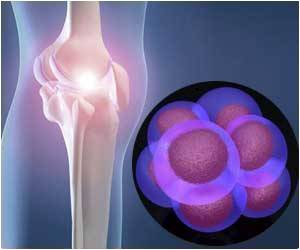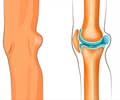Incidence of knee replacement surgery rose rapidly among 30 to 59 year-olds, reveals review.

"OA risk is shown to increase with age and for severe knee OA arthroplasty is a commonly used treatment option when patients are unresponsive to more conservative therapies," said Dr. Jarkko Leskinen, an orthopedic surgeon at Helsinki University Central Hospital in Finland and lead author of the current study. "Despite the more frequent use of replacement surgery, very few data are published on knee arthroplasty incidence and its effects in younger populations." To advance understanding of this issue, researchers obtained data collected by the Finnish Arthroplasty Registry of all unicondylar (partial) and total knee replacements performed between 1980 and 2006. The team analyzed the effects of gender, age group and hospital volume on incidence rates of arthroplasty for knee OA.
Findings indicate a 130-fold increase in incidence of total knee arthroplasty among those between the ages of 30 and 59 years during the study period. The incidence increased from 0.5 to 65 operations per 100,000 individuals, with the most rapid increase occurring from 2001 to 2006 (18 to 65 operations per 100,000). Increase in incidence of partial knee replacements was also observed from 0.2 to 10 operations per 100,000 inhabitants. Researchers also found that in the last ten years of the study the incidence of total knee replacements was 1.6 to 2.4-fold higher in women than in men. Incidences of total and partial knee replacements were also higher in the oldest age group (50 to 59 years of age).
Dr. Leskinen concludes, "Our study confirmed rapid growth in incidences of partial and total knee arthroplasty in those less than 60 years of age. Given that younger patients may be at higher risk of artificial knee joint failure and thus in need of a second replacement surgery, long-term data are needed before widespread use of total knee arthroplasty is recommended for this patient population."
In a related editorial also published in Arthritis & Rheumatism, Dr. Elena Losina with Brigham and Women's Hospital and Harvard Medical School in Boston, Massachusetts agrees, "Total knee arthroplasty is an effective intervention for OA with excellent outcomes for patients in their 60's, 70's and 80's. However, past performance may not guarantee future success, and with an increasing number of knee replacement recipients under 60 years old, more intensive study of arthroplasty outcomes in younger patients is warranted."
Source-Eurekalert










